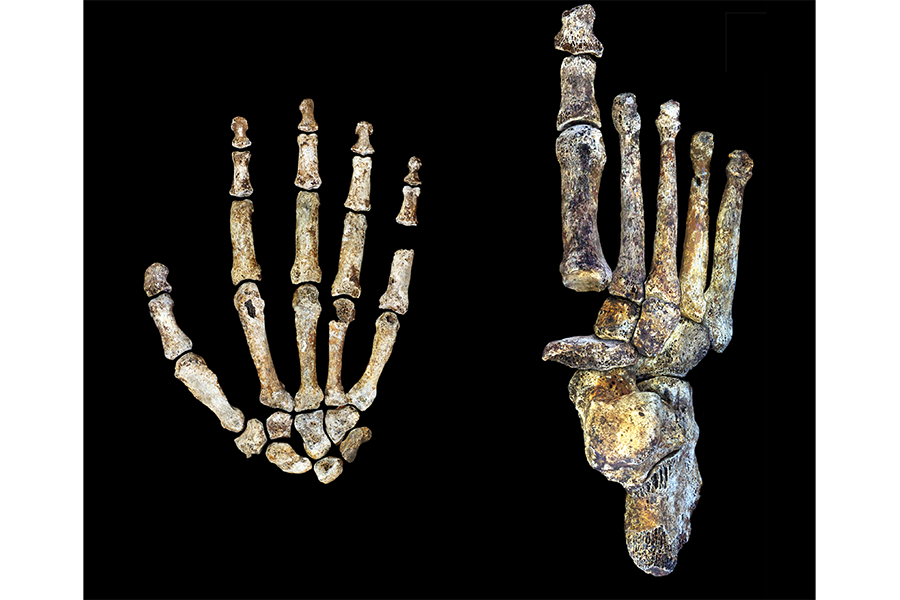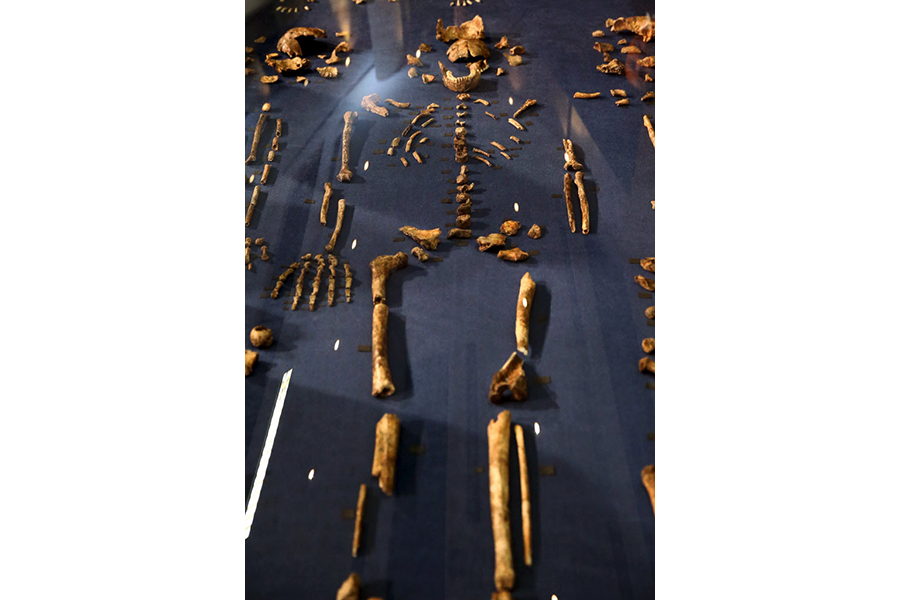Our human ancestor Homo naledi 'walked a lot like us'
Loading...
Homo naledi, the ancient human ancestor that’s been providing exciting clues about evolution, had “human-like feet” that allowed it to walk long distances and perhaps even run, researchers said on Tuesday.
Examining our relative’s feet and hand bones that were recently uncovered in a South African cave, researchers said there were several similarities H. naledi shared with our species.
“The legs are long, the knees are like ours, the feet are human-like. Homo naledi walked a lot like us," Dartmouth College anthropologist Jeremy DeSilva told Reuters.
Looking at the ankle joint anatomy, the big toe also unable to grasp objects, and the relative proportions of the ankle to the toes, researchers were able to conclude that its foot was largely like ours.
A key difference in our relative’s hand and foot anatomy is that it had more primitive characteristics, allowing them to climb trees regularly and more easily, said the team.
H. naledi had strongly curved fingers, for example, as opposed to the straight ones of people and Neanderthals.
Its foot was also shaped somewhat differently, with a flatter arch, curved toes, and a less robust heel.
Based on these characteristics, the ancestor would have been more proficient than modern humans in the trees, William Harcourt-Smith, a paleoanthropologist of Lehman College CUNY and New York's American Museum of Natural History, told Reuters.
Still, the similarities between H. naledi, one of the most primitive members of genus Homo, and modern humans are greater than previously thought, scientists said. Researchers first found the species in 2013, and believe it emerged around 2.5 million to 2.8 million years ago.
The fossils discovery made in South Africa last month also revealed that our ancestor engaged in relatively civilized entombment practices to dispose of their dead, reported The Christian Science Monitor.
“Our science has known for decades that upright walking, bipedalism, preceded brain enlargement over the course of human evolution. But never before has it been so obvious,” said Mr. DeSilva. “Homo naledi possessed a strikingly modern human-like foot, even though its brain was only about one-third the size of our brains today.”
This report contains material from Reuters.









